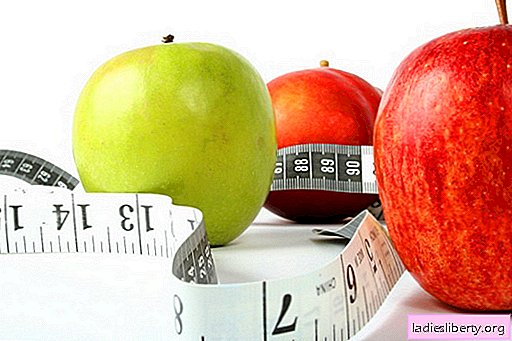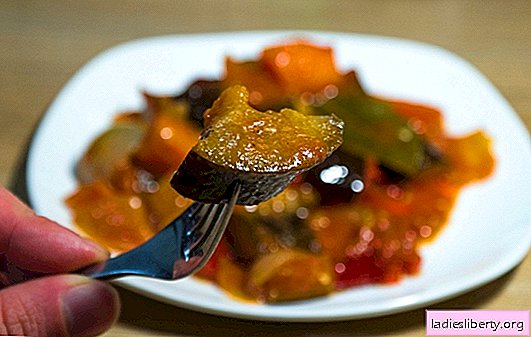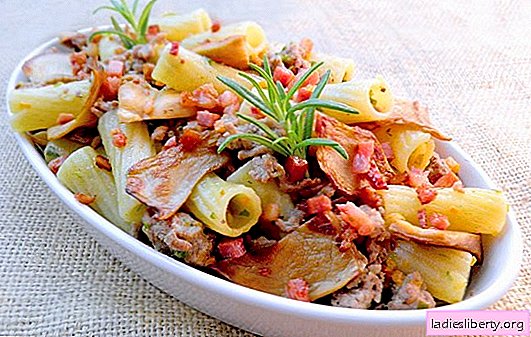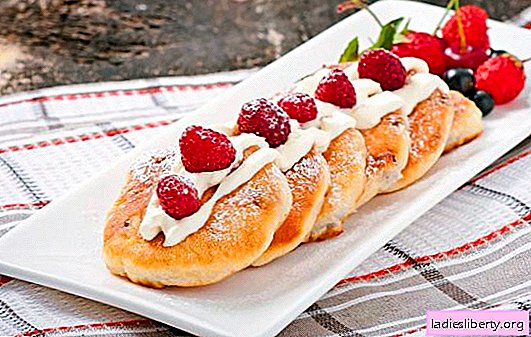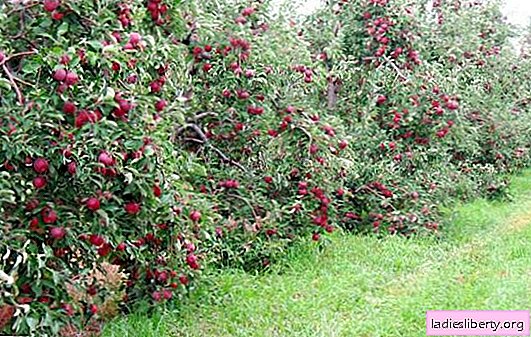
A small fruit tree with an early onset of fruiting and giving a bountiful harvest is the dream of a zealous owner of six acres. It requires little space, does not obscure the rest of the plants, can fill any sunny corners of the garden.
Dwarf apple trees are not inferior in productivity to their higher relatives, and the convenience of harvesting will delight all gardeners.
Appearance of dwarf apple trees
Dwarfs are called apple trees with a height of not more than 2.5 meters. The root system of such trees is fibrous, superficial, tree trunks are small not more than 2 meters. Dwarf apple trees are fully consistent in their varietal qualities with ordinary apple trees, but give a larger crop due to a shorter path for nutrients.

Advantages and disadvantages
The biggest advantage of dwarf apple trees is their size. Low growth allows them to be planted at a distance of 1.5 meters from each other, trunks circles are small (projection of the crown on the soil). The undersized fruit trees do not obscure other plants. The superficial root system allows them to be planted between tall apple trees, usually with a deep root system. Due to different soil levels, they do not take away nutrients and water from each other.
• Take up little space
• High yield
• Early onset of maturity (fruiting begins at 3 year)
• Convenient fruit picking
• Bear fruit every year
However, dwarf apple trees have their drawbacks:
• Requires backup
• Superficial root system does not tolerate frost
• Short lifespan
• Fast exhaustion in the absence of top dressing.
Breeding
To grow a dwarf apple tree on your site, you either need to plant the desired varieties yourself on a low stock or just buy a ready-made seedling. Absolutely no matter the stalk of a dwarf or an ordinary apple tree you will plant, the main thing is a dwarf stock. It is better if it is a clone material adapted to the conditions of your climate. For the Midland, frost-resistant stocks are relevant.
It is because of the dwarf stock that the time of the beginning of fruiting decreases, the fruit tree does not waste time building up the trunk and branches, and approximately three years after planting it begins to bear fruit.
Clone stock for dwarf apple trees
M9 is one of the most common stocks. Lives up to 40 years, the root system is not more than 80 cm in depth. Mandatory support and props. Due to the low occurrence of roots, it requires frequent watering and does not tolerate drought. Compatible with all grades for vaccination. Good fruitfulness only on fertile soils with an abundant layer of humus. Almost loses productivity on sandy and clay soils. Frost resistance of roots no more than -10 degrees.
The M8 stock, like the M9, was obtained in England at the beginning of the last century. Possessing all the shortcomings of the aforementioned cultivar, this stock requires high fertility soil and a high level of groundwater occurrence.
D-1071 launched in Donetsk land. Very good compatibility with most varieties of apple trees. Resistant to drought, frost resistance up to -14 degrees.

PB9 or Paradise Budagovsky, is well compatible with most varieties. The root system withstands frosts down to -14 degrees. Not afraid of drought and resistant to apple scab.
Dusen, a stock that has a greater depth of root than Paradizica and is more likely to be half-dwarf. Very high yields are leveled by poor frost resistance. Perhaps this is the least cold-resistant stock from the above. It does not apply to drought tolerant varieties and requires mandatory support.
These are not the only varieties of rootstocks for Central Russia, but they are most adapted to our climatic conditions and are widespread. Many varieties of these varieties and their hybrids are known.
Varieties of dwarf apple trees
Varieties of small apple trees are fully consistent with varieties of tall counterparts. Conventionally, they can be divided by season: summer, autumn and winter. Ideally, it is better to choose several varieties with different ripening dates. For example, summer apples are very light and poorly stored even in the refrigerator. When planting several winter dwarf apple trees, provide winter storage for future fruits.
Immediately think about how you will process and store a large number of apples. You can’t leave apples on the trees; the scavenger serves as a wonderful winter refuge and food for various pests of garden plantings. It is also impossible to put apples in a compost pile, since pectin substances prevent the formation of useful substances in compost. In any case, the extra apples should leave your site either deeply buried or taken to the trash.
Summer
• Melba
• Grushovka
• Candy
• Mantet
Autumn
• Autumn striped
• Sokolovskoe
• Sun
• Athlete
• Moscow necklace
• Zhigulevskoe
Winter
• Bratchud
• Arbat
• Carpet
Choose a seedling of a dwarf apple tree
It is better to buy a seedling in an agrotechnical nursery. This ensures that you really buy a seedling of a dwarf apple tree of a certain variety, and do not get a wild bird that gives a couple of tasteless apples.
Pay attention to the following signs of a seedling: it should not exceed half a meter in height, a knee-shaped inoculation should be visible on it, it is located between the root neck and the stem. Sapling roots are fibrous, sprawling, not thick, and not stem. A two-year-old seedling should have at least four developed branches with well-developed buds. Unfortunately, the dwarfism of this fruit tree can only be determined after fruiting has begun.

Planting of seedlings is carried out in the so-called “nap” period in spring or autumn. For a dwarf apple tree, a sunny place protected from the wind, where there is no stagnant water, is suitable. The soil needs light and nutritious. The superficial root system and high productivity quickly exhausts the supply of nutrients, therefore, constant nutrition is required for this fruit tree.
Care
Be sure to make support for dwarf apple trees. It can be delivered immediately when planting a seedling or installed later. Some apples may need support during the fruiting period due to the large number of apples.
To prevent the drought from which these fruit trees suffer, the inter-trunk space can be planted with meadow grass with a weak root system: fescue or bluegrass. Mow the grass up to 6 times and leave it in place. It will serve both for mulching trunks and useful fertilizer.
The main enemy of dwarf apple trees is cold. The vaccination site and surface roots can freeze even in small frosts. Too early sheltering of apple trees can cause the apple tree to wake up and grow in the midst of the onset of cold weather. Of course, in this case the plant is doomed. Wait until stable freezing starts at -10 degrees. Since dwarf apple trees need to cover the surface roots, not only the trunk and the scion site, but also the trunk circle. Lay a thick layer of humus on it, and scribble the spruce branches on top.
To protect against hares and mice, the trunk and lower branches are wrapped with nylon or rags soaked in tar. Lapnik is believed to be the best defense against these pests, but sometimes this is not enough.
Diseases of dwarf apple trees
Diseases in dwarf apple trees are exactly the same as in vigorous ones. This is scab, powdery mildew, various types of cancer, fungal diseases. Preventive treatment is carried out in the spring before waking up, the next until the flowers bloom and the last after the main discharge of the leaves.
More and more gardeners plant dwarf fruit trees on their plots. High yields on a small plot of land, convenient fruit collection and varietal diversity make them a much more preferable choice compared to tall counterparts. The main obstacle to the wider distribution of dwarf apple trees is severe frosts. Unfortunately, in the middle zone there are frosts that can destroy this miracle of agricultural selection in the vine.

